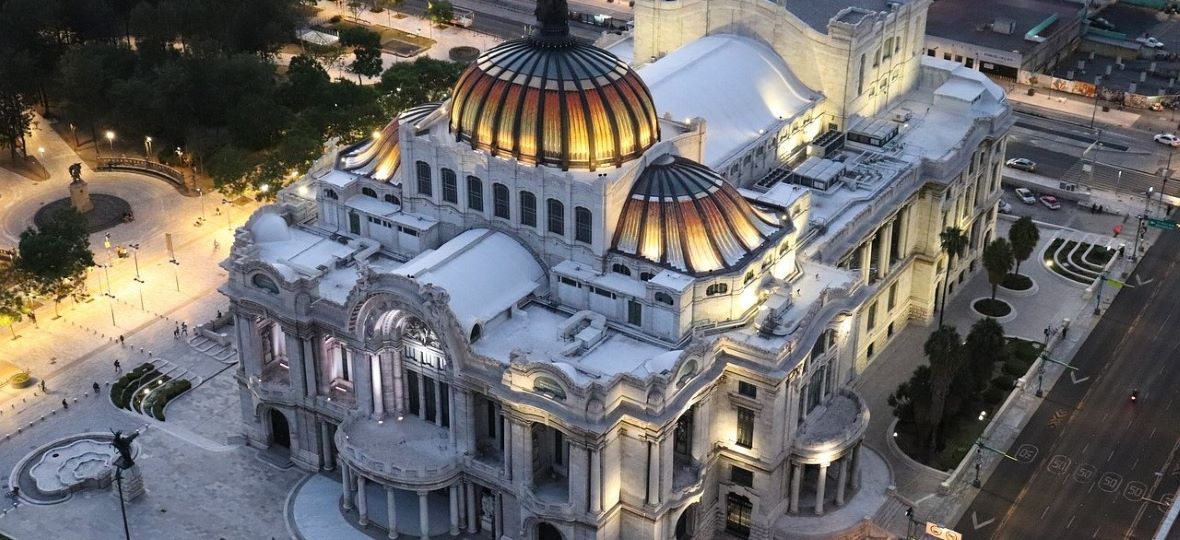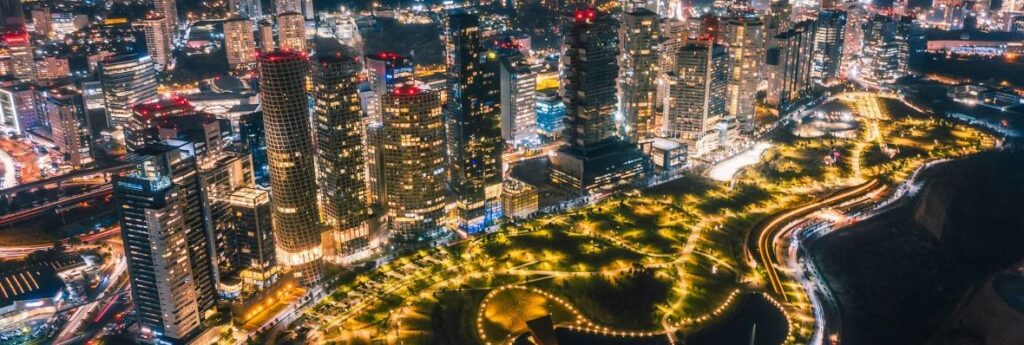“Mexico City is always a good idea,” would be my geographical manipulation of a quote attributed to Audrey Hepburn, reflecting on the best-known capital city in the world (Paris). Yet, barely five hours’ flying time from Toronto (and marginally longer from YVR), there is another gem of a capital city powerfully reflecting the character and culture of the great country of Mexico.
Not to dwell too much on the numerical impressiveness of CDMX (‘Ciudad de Mexico’, the official name of Mexico City since 2016) being the biggest capital city in the Americas, the second largest urban area in the Western Hemisphere, and the largest Spanish-speaking city in the world, I see Mexico City as a deliciously beautiful, complex, and colourful canvas. The quality of light shining on the Valley of Mexico, situated at an altitude of 2,240 metres, calls for a palette depicting strength and sublimity; natural and man-made; popular and elegant…
The city is surprisingly GREEN. Most travellers choose Airbnbs in the neighbourhoods of Condesa, Roma, or Coyoacán, or hotels along the Paseo de la Reforma or leafy Polanco and the vicinity of Chapultepec Forest. All parks are clean and safe to roam during the day, enjoy refreshing fountains, and observe multiple dog-walkers taking care of the best-behaved dogs I have ever seen.
Café culture is incredibly vibrant, and local brands are successfully competing with Starbucks, which is surprisingly common. Alfonso Cuarón’s 2018 film, “Roma,” elevated this leafy neighbourhood to a hub of funky cafés, restaurants, boutiques, and art galleries. Likely the best neighbourhood to stay for the location and availability of fun content.

BLUE: The colour of Frida Kahlo’s amazingly funky and beautiful residence in Coyoacán. A very popular sight, with online bookings only recommended for a morning visit to avoid crowds. Julie Taymor’s 2002 movie, “Frida” embedded this fantastic artist into popular culture and should be viewed in preparation for the visit. Blue is also the colour of Frida’s part of a studio in San Ángel, where she created alongside her husband, painter Diego Rivera. His part of the studio is RED, connected to Frida’s by a famous bridge.
WHITE: Monumental architecture from the early 20th century, inspired by French designs and reflective of Mexico’s political ambition to distance itself from the colonial past, can be found in the Historic Centre, Chapultepec Forest, and other neighbourhoods. President Porfirio Díaz ordered the construction of many major government buildings and monuments, some of which are symbolic of Mexico City.
Especially notable is the “Angel of Independence,” celebrating the 100th Anniversary of Mexican independence, located on Paseo de la Reforma. Palacio de Bellas Artes in the Historic Centre is unmissable as it blends European and Mexican culture in one impressive site. Inside, the murals of Rivera, Siqueiros, Orozco, and Camarena illustrate the history of independent Mexico and deliver a strong social commentary of the era.
GREY: The colour of Olmec, Toltec, and Aztec temples scattered all over the city, reminding us of the presence of many fascinating cultures that existed in the Valley. The Aztec El Templo Mayor, right next to the Metropolitan Cathedral at one end of the vast Zócalo Square, calls for a deeper understanding of the long line of civilizations preceding modern Mexico. And the right place to gain a proper perspective on Mexico’s pre-colonial history is the Museo Nacional de Antropología in Polanco. In my book, one of the best archaeological collections I have seen.

It is worth mentioning that the entrance fees to government-run museums and galleries are very reasonable. The same goes for public transportation, Uber, and official taxis, making getting around Mexico City uncomplicated. Walking around neighbourhoods of interest is pleasant and safe during the day and early hours of the evening. In general, visiting Mexico City did not feel any different from visiting other world cities of this size. Café bakeries are outstanding, the gastronomic scene is elaborate, and supermarkets, pharmacies, and local markets are easy to find.
If not for the seasonal heat, I would say, “Mexico City is always a good idea.” However, guidebooks state that the best time to visit is in spring, between March and May, when temperatures are mild before the rainy season kicks in (we were there in early March). So, think of Mexico City as your post-winter, easily accessible, culture, and lifestyle destination. You will be impressed.
(Wolf Paunic is a 30-year veteran of the Canadian travel industry, best known for his tenure with Globus Family of brands followed by executive roles with Trafalgar and Travel Corporation in Canada. He has visited 70 countries and documented his most vivid impressions on his Instagram page: wvp23travel, including photos from Mexico City visit in early April.)

